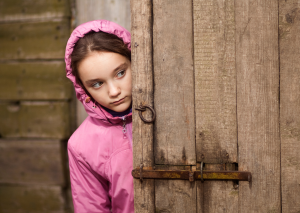What does fight, flight, freeze look like in children?
Fight, flight, freeze in the modern-day world can be triggered for all sorts of reasons, and generally not because we are in extreme danger. However, it is a brain and body response and it feels very real when we are worried, scared, anxious or feel personally threatened. Here’s what it might look like in children and young people:
Fight tends to be an outward behaviour or feeling like someone wants to act this way such as shouting, screaming, hitting or throwing something. Fight can cause lots of different body changes such as clenched fists, tense shoulders or jaw, muscle cramps and/or increased heart rate. Children and young people may cry a lot or be inconsolable, or angry a lot of the time if they are stuck in fight mode, even if the threat isn’t happening at that moment in time.
Flight can cause an inward behaviour such as running away, hiding or locking themselves in their room or more subtly just walking away from a situation such as an argument or fight. Again this can be a feeling or thought that someone might have but and keep it inside. Flight can also be distraction tactics or even words such as distracting from a conversation or pretending they can’t hear you to avoid a situation.
Freeze can cause changes to the body as well such as increased heart rate, shaking or the eye to widen. Freeze can make you feel like you have forgotten everything like in a test situation, or when a teacher shouts a child’s name they may jump and freeze; worrying about what is expected of them. Freeze can also be zoning out, shutting down or ignoring people, after freeze usually follows the need to fight or flee.
Depending on each trigger, situation or event we need to understand when we are in fight, flight, freeze.
- If we have been in a normal state and then our fight, flight, freeze is triggered then we can hopefully know that the response happened, the threat or perceived threat has passed and think about how we can settle our mind, body and/or breathing back to a normal state.
- Anxiety is a natural feeling and we will all feel anxious at some point in our life, however, if it doesn’t pass or we feel that there isn’t a reason for it then we need to help our alarm to settle.
- If we are in constant fight, flight, freeze and overwhelmed by everything, triggered by everything or hypersensitive to things then we need to work out how to get into a normal and more relaxed state. This is where help may be needed!



